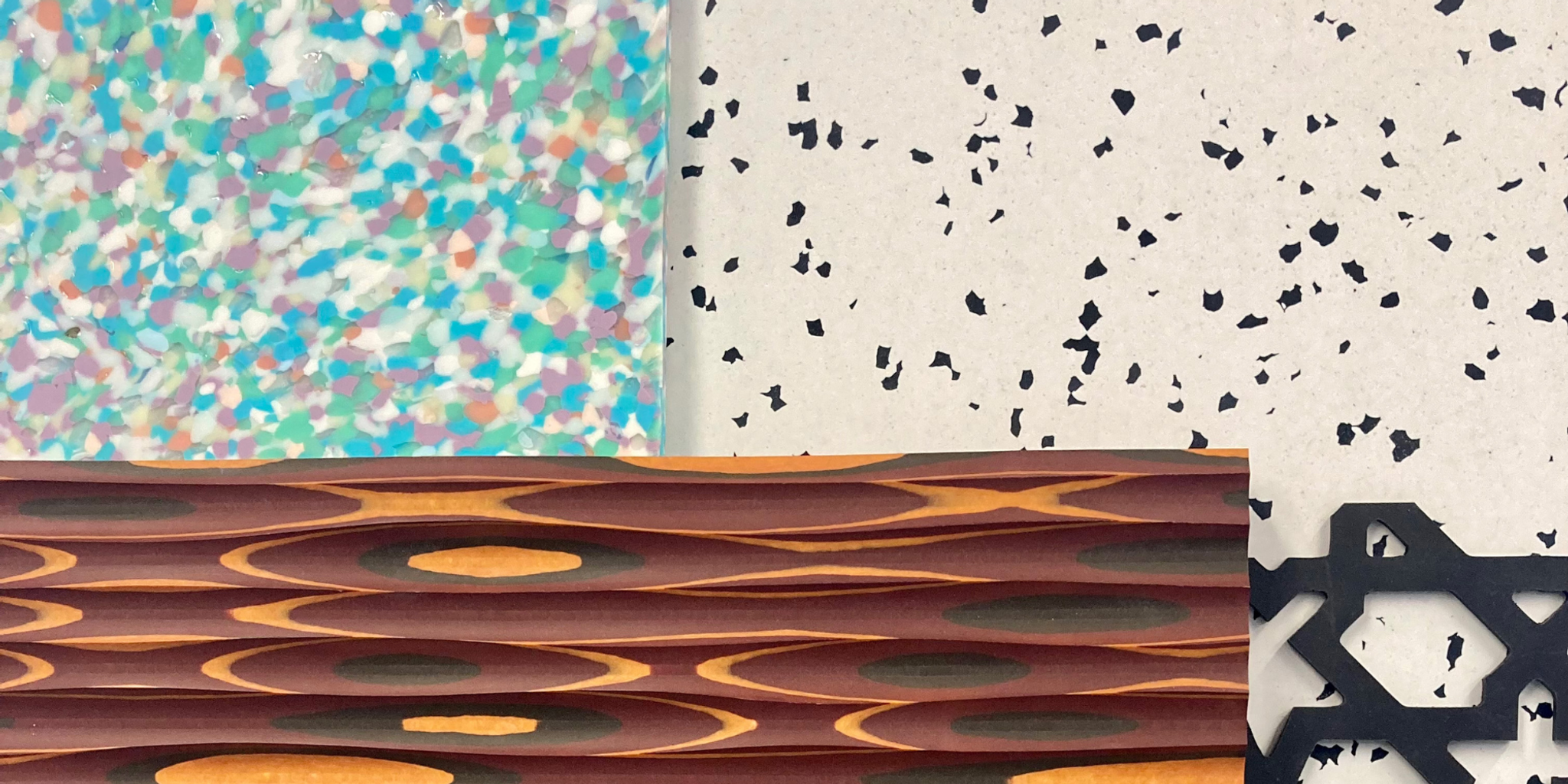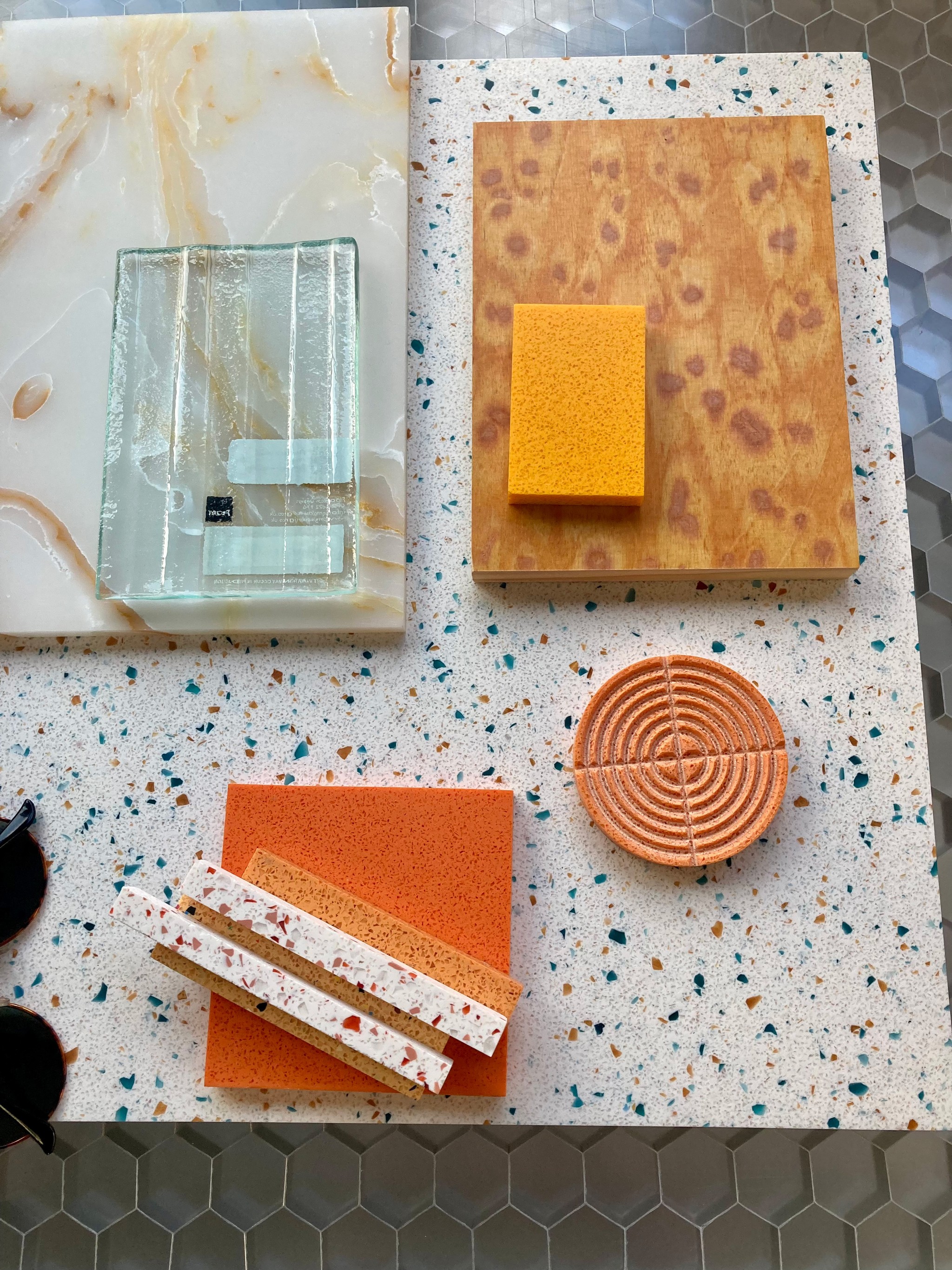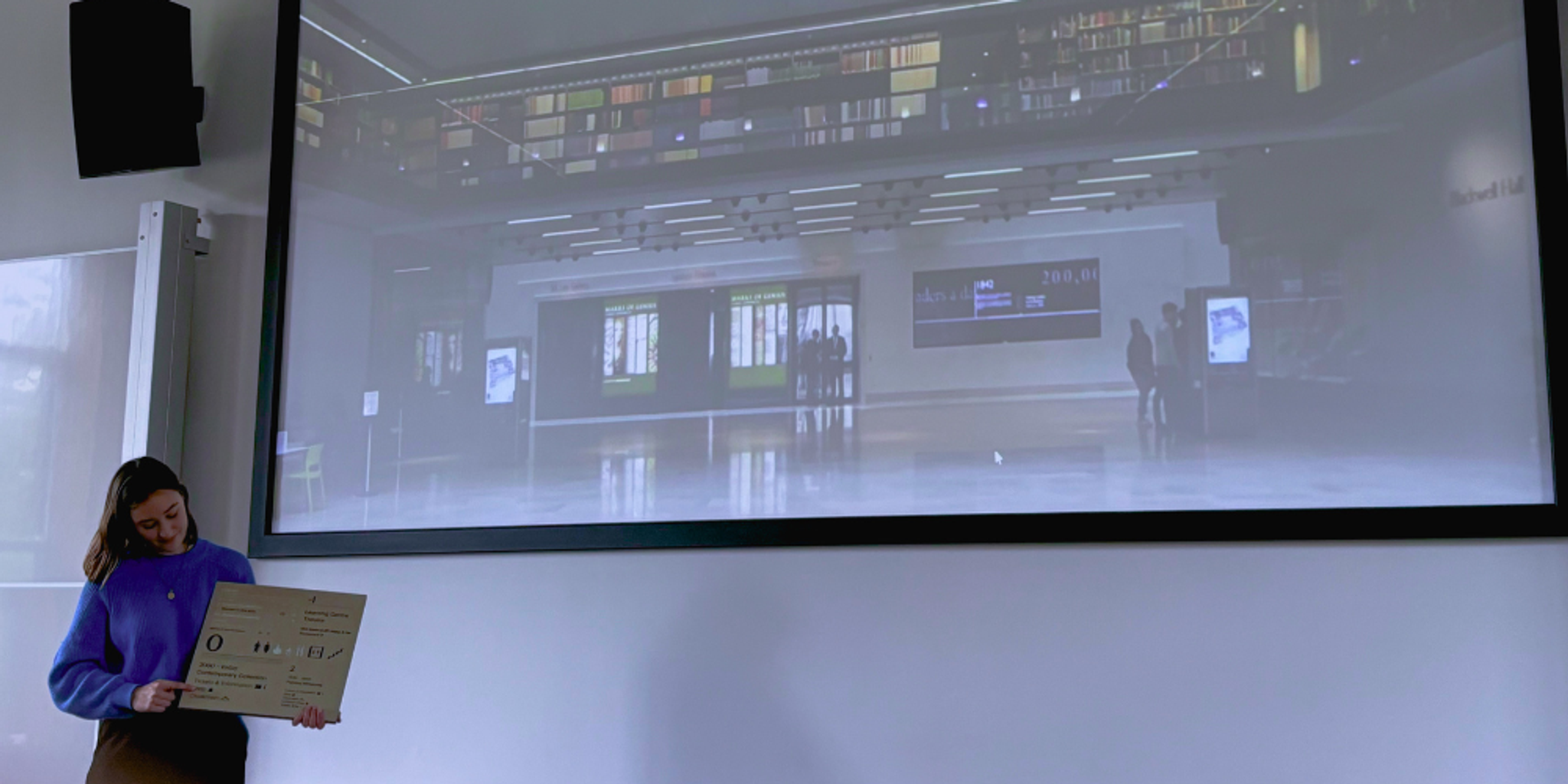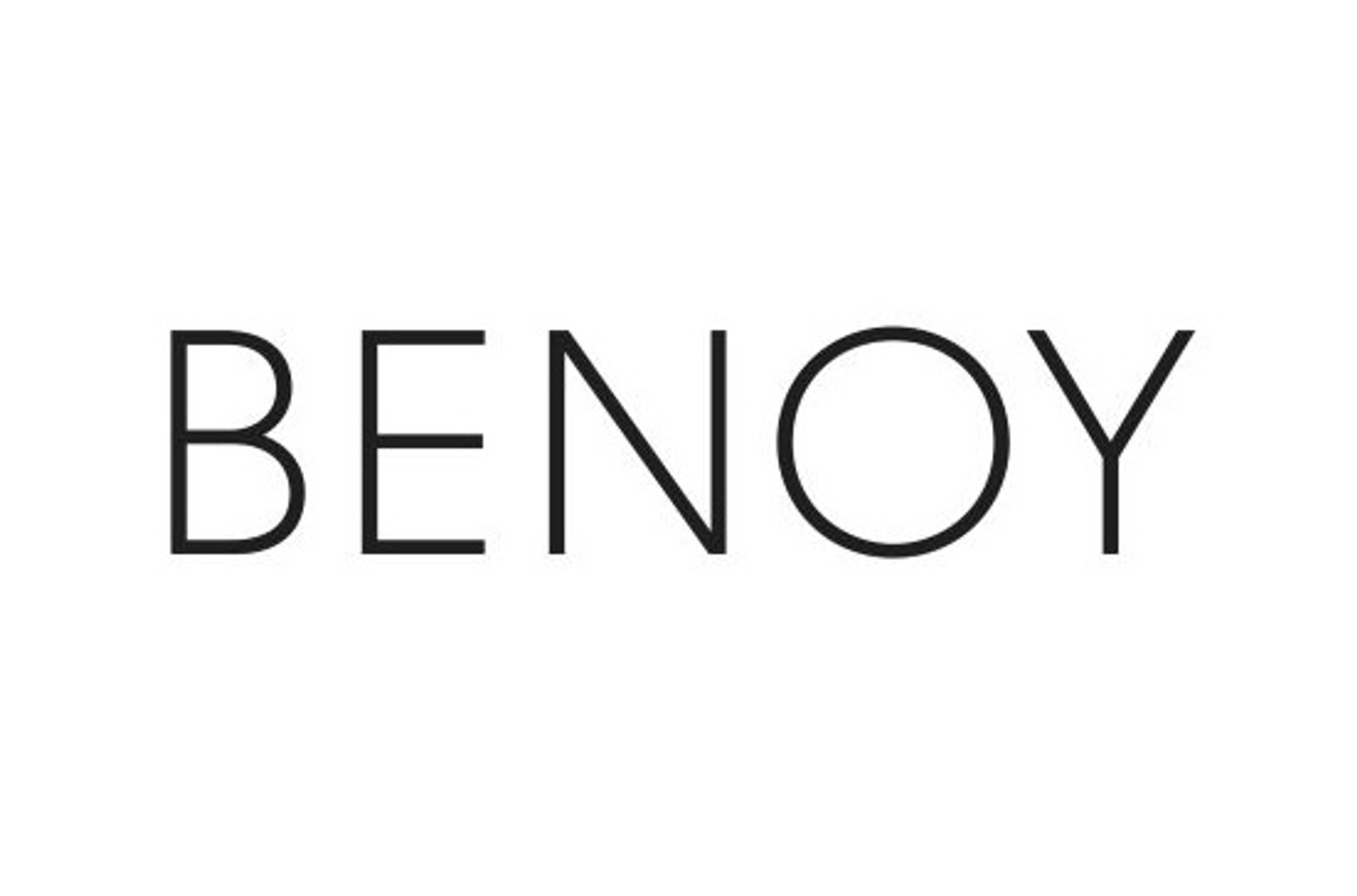News + Insight

21 February 2024
How can designers adopt more sustainable practices in 2024?
Edward Lothian Product Designer at Benoy Branded Environments reflects on the future of sustainability in design.
After attending the Surface Design Show 2024 at the Business Design Centre in London, Edward Lothian reflects on the future of sustainability in design and how designers can adopt more sustainable practices in 2024. The Surface Design Show is an annual exhibition in London which brings together architects and designers to celebrate the latest thinking in material design.
What was your main takeaway from the Surface Design Show?
The show was really interesting this year, with useful exhibitions on new suppliers and a range of talks. Despite the focus on ‘mindful living’, the theme for the exhibition this year, I was struck by the lack of new sustainable materials being exhibited, aside from recycled plastic. At the moment, it seems a lot of work is being done in the acrylic and recycled plastic space. More companies seem to be diversifying their range into the recycled market, following the lead of companies like CDUK, who were sponsoring the event.
The overall experience served as a reminder that there is still a long way to go in sustainable technology and we can't just specify green materials as a quick win on a project. I think it is tempting to believe that we can fix many issues around sustainability by simply finding better materials, but unfortunately, I don’t think that is the case.
How can designers adopt more sustainable practices in 2024?
In order to ensure we are being as sustainable as possible in our work, we need to be considering every aspect, from concept and materials to implementation and supply chains. We are not yet at the point where we have carbon neutral alternatives to concrete, steel and glass, but the materials themselves are only a segment of the overall picture. In this case we must look to other ways of reducing the impact of large scale projects. Ensuring energy efficiency, minimizing ecological impact and using recycled materials where possible.
For example, within Branded Environments we often start projects from a strategic place; what is the most efficient way we can achieve our aims? We can then decide on the aesthetic concept, consider local/sustainable suppliers and try to minimise the footprint of our work. A nice example of this is a recent piece of work we completed for the London College of Fashion. We were enlisted to implement an appropriate and effective wayfinding scheme for LCF, who have recently consolidated their campuses into one phenomenal concrete space in Stratford. We settled on a lightweight scheme which utilised vinyl lettering applied directly to the walls. This not only cut down material usage but worked really effectively within the cathedral-like concrete space. This scheme demonstrated that sometimes less really can be more.
The beauty of projects such as these is that they set a precedent for future work. In our experience, clients seek sustainable solutions and this project serves as a tangible example of how sustainability can be realised in a real world context.

What trends are you noticing in design right now?
I think digital technology has a big part to play in this. I attended a talk at the Surface Design Show by the founder of a new website called Stylib, which is an AI powered catalogue of materials which you can use to find materials for a project based on images and descriptions of what you want.
This exemplifies the direction of the industry at the moment, in trying to make designers more efficient in finding and specifying not just sustainable materials but helping the industry in creating efficiencies in supply chains/ work flows and resource allocation.
There is no denying technology will continue to shape our sector and help us to become better designers. But we need to be cautious in how we are utilising these technologies, and ensure we are not allowing the convenience of technologies such as AI to replace proactive and considered design work.


